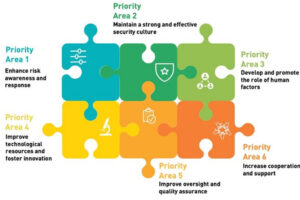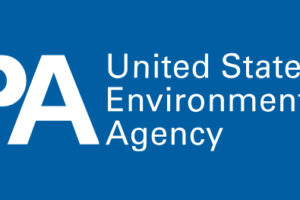
It has been over 270 days since President Biden issued his landmark Executive Order (EO) 14110, “Safe, Secure, and Trustworthy Development and Use of Artificial Intelligence,” ensuring that the United States leads the world in seizing the promise of Artificial Intelligence (AI) while addressing its risks. Throughout its AI-related efforts, the Department of Homeland Security (DHS) has maintained a clear set of principles and robust governance that prioritizes the protection of civil rights, civil liberties, and privacy, and increased its engagement with affected communities.
Conducted New AI Pilot to Identify and Combat Vulnerabilities in Critical United States Government Software, Systems, and Networks
- As directed in executive order 14110 and on behalf of DHS, the Cybersecurity and Infrastructure Security Agency (CISA) developed, conducted, and completed an operational pilot using AI capabilities to support CISA’s cybersecurity mission in the detection and remediation of vulnerabilities in critical United States Government software, systems, and networks.
- Through this operational pilot, CISA examined whether current vulnerability detection software products that use AI, including large language models, are more effective at detecting vulnerabilities than those that do not use AI.
- The report found that the best use of AI for vulnerability detection currently lies in supplementing and enhancing, as opposed to replacing, existing tools.
- AI tools are improving constantly, and CISA will continue to monitor the market and test tools to ensure CISA’s vulnerability detection capabilities remain state-of-the-art.
Developed an AI International Engagement Plan for Collaboration with Allies and Partners
- DHS developed a comprehensive strategy of engagement on AI and critical infrastructure with our international allies and partners, including, Canada, Mexico, the European Union (EU), and Five Eyes partners covering everything from cybersecurity to transnational infrastructure. This collaborative strategy identifies ways for the United States and its allies to detect, deter, and prevent threats at the nexus of AI, cyber, and critical infrastructure security.
- The efforts outlined in the strategy include sharing lessons learned and threat information, and identifying and collaborating on new opportunities and risks, through existing and novel international forums. DHS will engage across the spectrum with our closest security allies, in support of the Biden-Harris Administration’s AI contact group of nations, multilateral efforts such as the G7 and the Organization for Economic Cooperation and Development, and pivotal bilateral engagements with countries, including those with shared critical infrastructure.
Hired 15 New Experts to the “AI Corps” Who are Helping Responsibly Leverage AI Across DHS Mission Areas
- As part of the Department’s “AI Corps” hiring sprint, DHS has onboarded the first cohort of 15 AI experts from the private and public sectors to play pivotal roles responsibly leveraging AI across strategic mission areas in the Department. The AI Corps is one of the most significant AI-talent recruitment efforts of any federal civilian agency, aiming to hire 50 AI experts to enhance service delivery and impact the homeland security mission while safeguarding privacy, civil rights, and civil liberties.
- AI Corps members are currently working with the DHS Supply Chain Resilience Center to investigate how AI could be used to forecast the impacts of critical supply chain disruptions to public safety and security; working with DHS Science & Technology (S&T) to develop test and evaluation (T&E) requirements across the lifecycle of an AI system; and leveraging generative AI to support the work of the Department’s Homeland Security Investigations (HSI) department to combat fentanyl, human trafficking, child exploitation, and other criminal networks.
- In addition to the AI Corps, the DHS Office of Partnership and Engagement (OPE) hired a new Senior Director for Artificial Intelligence to further build the Department’s engagement on AI across sectors, meeting a commitment outlined in the AI Roadmap and establishing a channel for ongoing stakeholder feedback and information sharing.
Convened the AI Safety and Security Board and Took Steps to Bolster AI Safety and Security
- At the President’s direction, Secretary of Homeland Security Alejandro N. Mayorkas established the AI Safety and Security Board (AISSB), an unparalleled gathering of AI leaders representing prominent companies in the hardware and software industries, AI model labs, critical infrastructure owners and operators, civil rights leaders, and federal, state, and local officials. The President directed the Board to provide to the Secretary and the critical infrastructure community advice, information, and recommendations on the safe and secure development and deployment of AI.
- The Board convened its inaugural meeting in May 2024. Since then, the Department and the Board have been developing guidance and standards of practices to improve AI safety and security across the AI ecosystem. The deployment of safe, secure, and trustworthy AI generates consumer trust and fuels adoption and innovation. AI can substantially improve the services the nation’s critical infrastructure provides, if we secure systems against safety and security threats.
Met with 16 Groups to Better Ensure Civil Rights, Civil Liberties and Privacy Are Protected in AI Adoption
- Through the DHS Artificial Intelligence Task Force, the DHS Office for Civil Rights and Civil Liberties (CRCL), in collaboration with the DHS Privacy Office, leads efforts to develop tailored approaches to provide guidance, risk assessment, mitigation strategies, and oversight for the protection of civil rights and civil liberties in projects championed by the DHS AI Task Force.
- In March 2024, the Department launched the AI Roadmap, which details plans to test uses of the technologies that deliver meaningful benefits to the American public and advance homeland security, while ensuring that individuals’ privacy, civil rights, and civil liberties are protected.
- Under the leadership of the DHS Office of Partnership and Engagement (OPE), the Department is exercising its commitment to ensure increased engagement on the development and deployment of AI with community-based organizations; civil-rights and civil-liberties organizations; academic institutions; industry; State, local, Tribal, and territorial governments; and other stakeholders. Building on an initial series of AI and civil rights engagements led by OPE with DHS leadership in Spring 2024, OPE facilitated engagement for Secretary Mayorkas with civil society leaders to discuss the AI Roadmap. In his engagement, the Secretary emphasized the AI Roadmap’s direction to ensure the responsible and trustworthy use of AI and explicit commitment to continued partnerships and engagement with civil society. The Department has continued to engage with multiple civil society, academic, industry and other organizations to discuss privacy, civil rights, and civil liberties protections and impacts and how they are being addressed through the DHS AI Roadmap.
These efforts build and expand on the Department’s ongoing AI initiatives announced earlier this year to facilitates the safe and responsible deployment and use of AI in federal government, critical infrastructure, and the U.S. economy.











